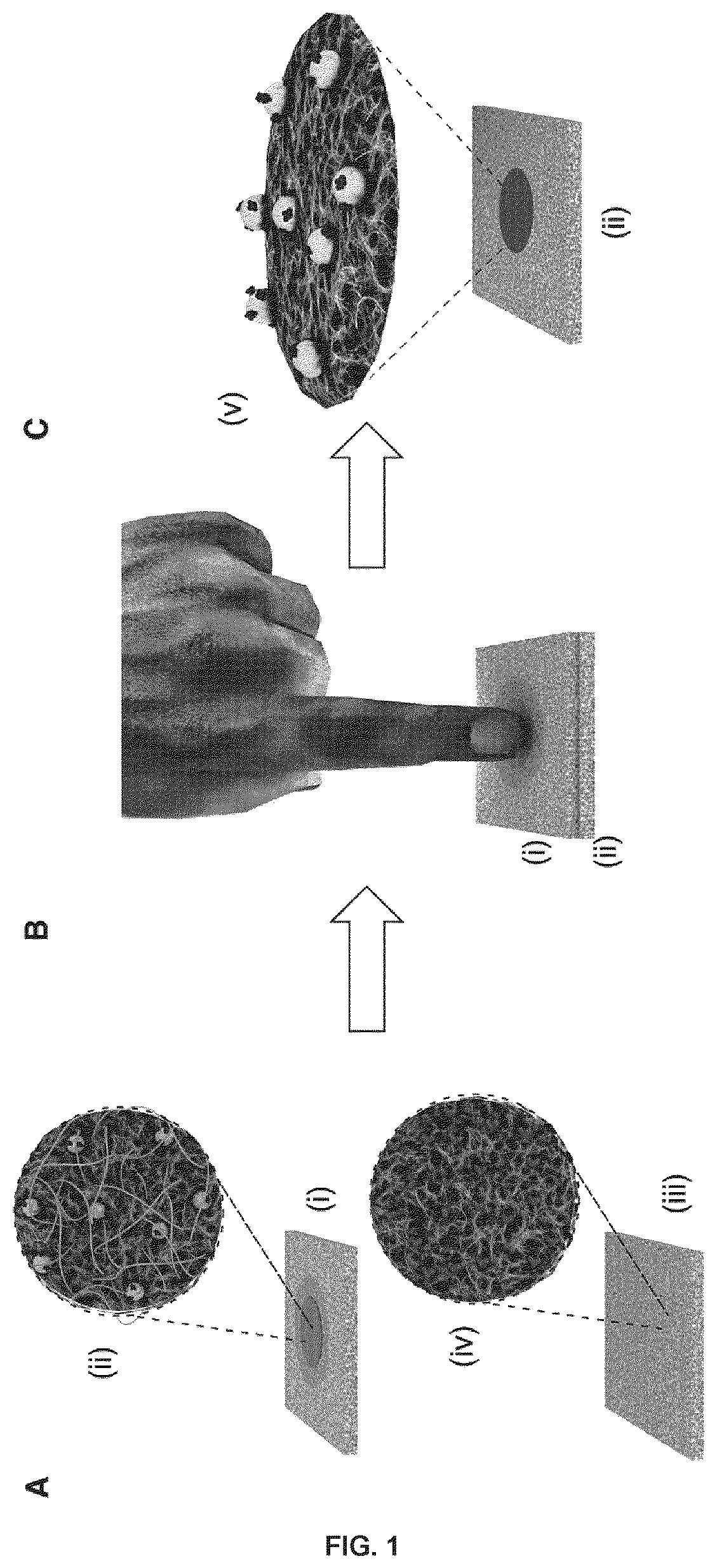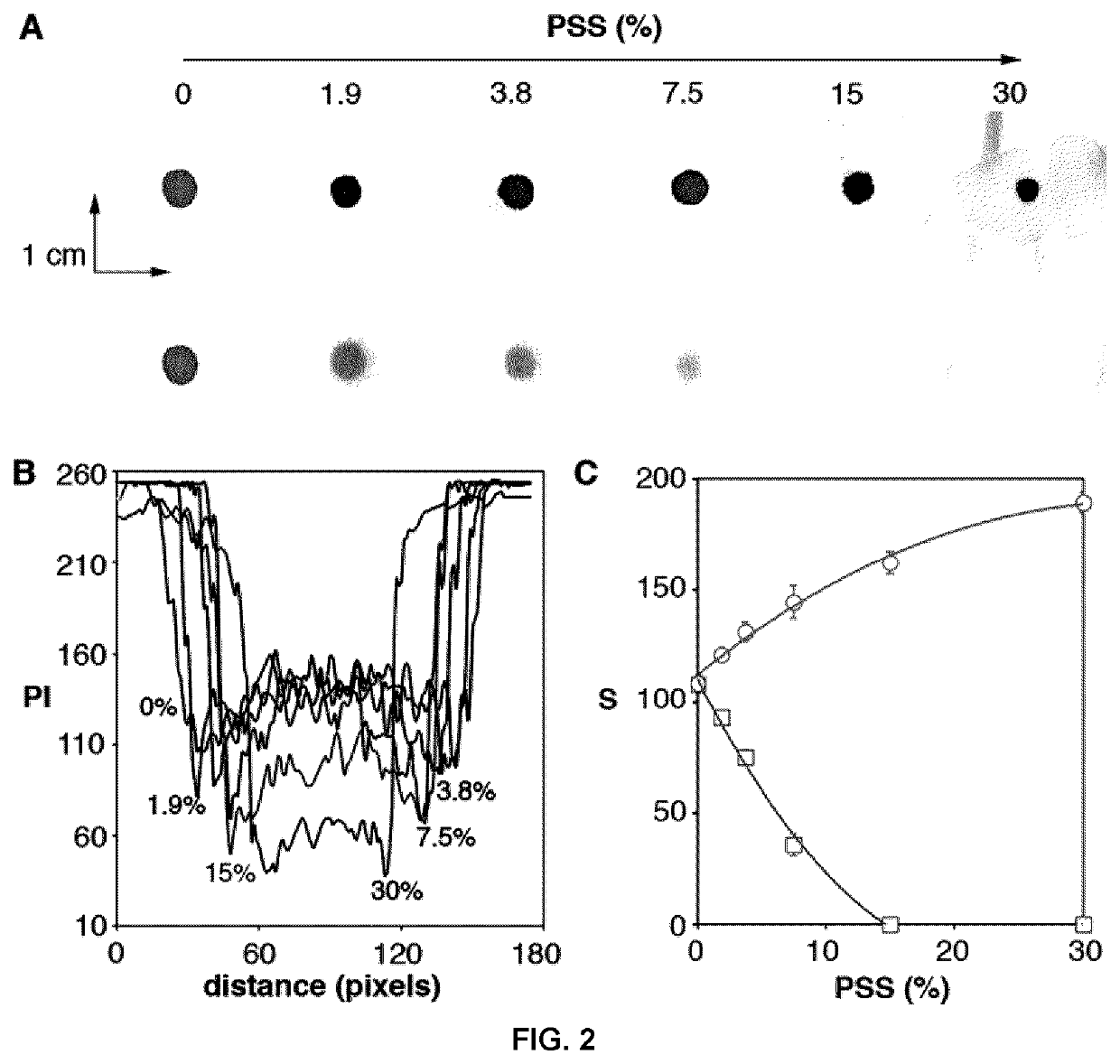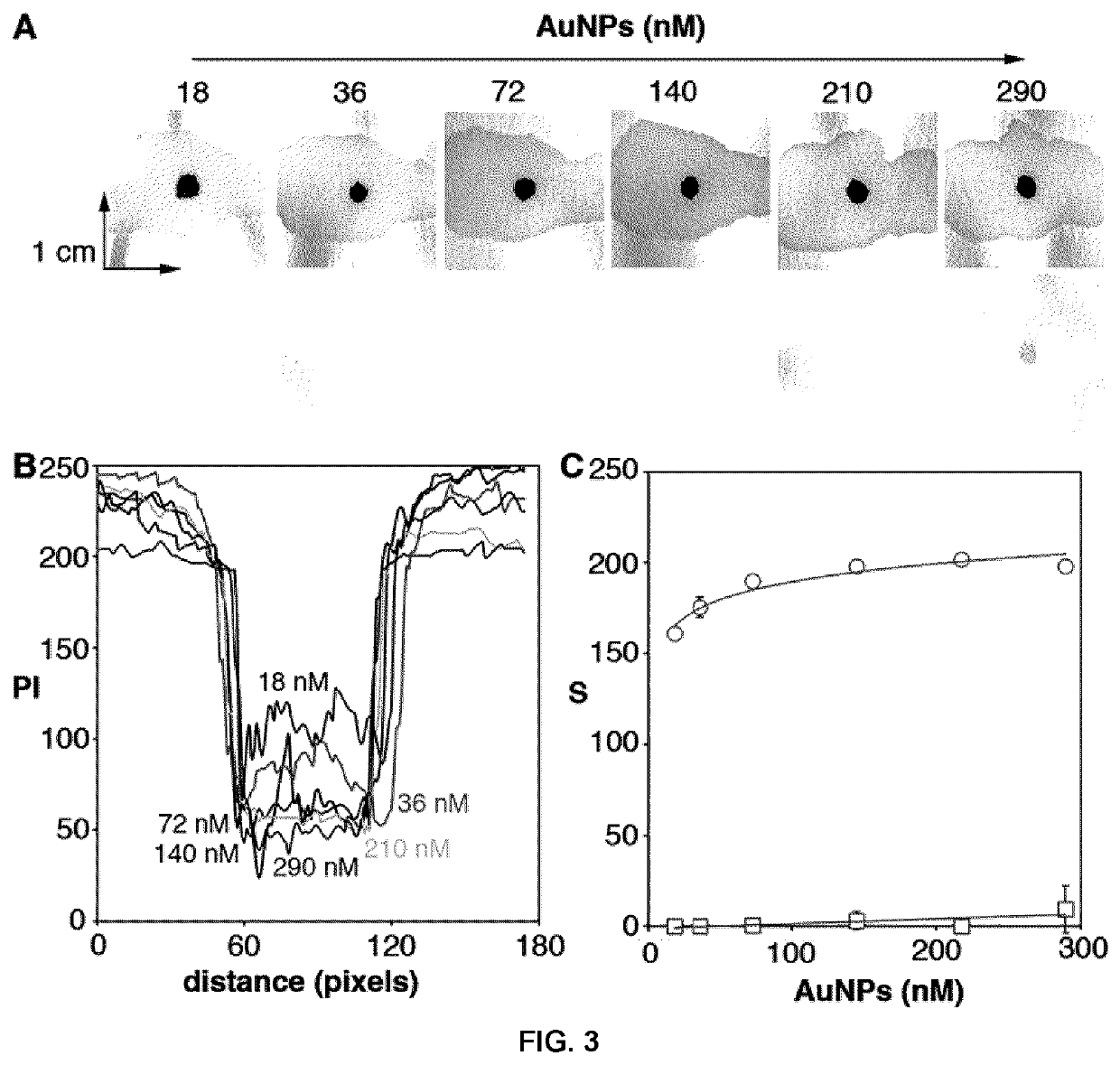Process for storing and releasing protein-decorated nanoparticles on paper substrates
a technology of protein-decorated nanoparticles and paper substrates, which is applied in the field of protein-decorated nanoparticles storage and release on paper substrates, can solve the problems of high inefficiency, difficult to store them in reservoirs made of this material, and incompatible with origami paper-based analytical devices such as origami paper-based analytical devices
- Summary
- Abstract
- Description
- Claims
- Application Information
AI Technical Summary
Benefits of technology
Problems solved by technology
Method used
Image
Examples
Embodiment Construction
[0055]Synthesis and modification of gold nanoparticles with polyethylene glycol and avidin: Citrate-capped gold nanoparticles with a diameter of ca. 40 nm were synthesized with the Turkevich method as previously described (Russell et al., Augmented Reality for Real-Time Detection and Interpretation of Colorimetric Signals Generated by Paper-Based Biosensors. ACS Sensors 2017, 2, 848-853). The nanoparticles were then modified with 0.1 mM thiolated polyethylene glycol (PEG) molecules ending in carboxylate moieties (poly(ethylene glycol) 2-mercaptoethyl ether acetic acid, Mn 2100, Sigma) overnight. The resulting PEGylated nanoparticles were concentrated and washed with water 5 times via centrifugation at 8000 rpm for 6 min. The nanoparticles were finally suspended in 0.5 M 2-(N-morpholino)ethanesulfonic acid (MES, Sigma) adjusted at pH 5.5. Carboxylate moieties around the nanoparticles were then transformed into sulfo-NHS esters by adding 1 mg of N-(3-dimethylaminopropyl)-N′-ethylcarbo...
PUM
| Property | Measurement | Unit |
|---|---|---|
| Temperature | aaaaa | aaaaa |
| Temperature | aaaaa | aaaaa |
| Temperature | aaaaa | aaaaa |
Abstract
Description
Claims
Application Information
 Login to View More
Login to View More - R&D
- Intellectual Property
- Life Sciences
- Materials
- Tech Scout
- Unparalleled Data Quality
- Higher Quality Content
- 60% Fewer Hallucinations
Browse by: Latest US Patents, China's latest patents, Technical Efficacy Thesaurus, Application Domain, Technology Topic, Popular Technical Reports.
© 2025 PatSnap. All rights reserved.Legal|Privacy policy|Modern Slavery Act Transparency Statement|Sitemap|About US| Contact US: help@patsnap.com



